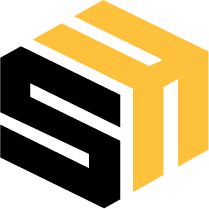First things first, WordPress has been evolving with time. It’s true that there are plenty of modern frameworks for building websites but still the issue of coding persists for the non-technical people. Therefore, making a WordPress website is as easy as most of the experts have depicted on YouTube. However, there are still some points to learn before starting implementation of WordPress development.
- How is WordPress Working?
- Structure of WordPress
Above mentioned points will be answered in this article along with the “How To Learn WordPress step by step”.
How is WordPress Working?
Let’s say you want to make a website that you can use as a blog or to share your ideas and thoughts with everyone. Thanks to WordPress, you don’t have to know a lot about computers or how to build websites to do this.

Getting a Domain and Hosting:
Your website needs a home on the internet. It’s like buying land. Another thing you’ll need is a unique web address, which is called a domain name. A web hosting company can give you both storage and a domain name.
Setting up WordPress:
Think of WordPress as the base and framework of your website. It’s like how a house is put together. Setting up WordPress is like putting up the walls and rooms of a house. You don’t have to start from scratch.
Decide on a Theme:
You want your website to look good, right? That’s why themes are important. Themes are like how you decorate the inside of your home. Choose a theme that already exists and fits your style. WordPress will then use that theme on your site to make it look nice.
Adding material:
This is where you begin adding material to your website. It’s like making your house look nicer. A simple tool lets you make and change pages (like rooms) and posts (like things you want to share with others), just like when you write a document on your computer.
Plug-ins and Media:
You can also add movies, photos, and other types of media to your site. You can think of it like putting up paintings, pictures, or furniture in your home. You can also add plugins to your site to add extra features like a contact form or a button to share on social media. You can easily add plugins to your site, just like you would add home tools or gadgets.
Updating and Maintenance:
Your website needs to be updated just like your house does. New versions of WordPress and its plugins will be released to make them work better and be safer. It’s as easy as clicking a button to make changes, just like changing something around the house. You can press the “Publish” button when you’re happy with your website. It’s the same as having people over to your house. Now everyone on the internet will be able to see your website.
Getting to Know Your Visitors:
People who visit your website can leave comments or use forms to get in touch with you. Like when someone writes you a note or talks to you through your front door.
Another thing you can see is how many people visit your site, which parts they like best, and where they come from. WordPress is basically an easy-to-use tool that lets anyone build and run a website, even if they aren’t tech-savvy. It gives you the structure, design, and tools you need to build your online place, which is a lot like building a house online.
Structure of WordPress
You can think of your WordPress site as a book, with different parts that are like chapters.

Core Software (The Book):
WordPress’s core software is like the main book. It’s the most important thing that keeps your website running. The basic features and functions you need to make and run your site are all in it.
Themes (The Cover):
Your website’s themes are like the cover of a book. They decide how your website looks and how it is put together as a whole. Like picking out a book cover, you can choose a theme to give your site a certain look.
Pages (Chapters):
Pages are like the parts of a book. Every page on your site is its own area where you can put different kinds of information. You could have a “About” page that tells people about yourself, a “Contact” page that lets them get in touch with you, and other pages that share your important ideas or topics.
Posts (Single Pages in a Chapter):
Posts are like single pages in a chapter. That’s where you write your posts, stories, or papers. As a blog or news page, each post is like a page.
Media (Pictures and Videos):
Pictures and videos are media, just like the pictures and photos in your book. They make your pages and posts look better. You can upload these media pieces and put them anywhere you want.
Plugins (Extra Tools and Features):
You can add plugins to your book to make it more useful. They add extra features to your website, like a dictionary to translate your text or a calendar to plan events. You can pick and add plugins to make your website work better.
Widgets (Notes and Bookmarks):
A widget is like a note or bookmark in a book. You can put them in your website’s sidebars or footers. They are small blocks of information or features. A search bar, your social media links, or your most recent posts are some of the things they can show.
Menu (Table of Contents):
A menu is like the list of pages at the beginning of a book. They make it easier for people to find their way around your website by linking to different pages and parts. You can organize and structure your information by making menus.
Users:
Users are like co-authors or people who work with you on your book. A lot of people can work on your website at the same time, and they can all do different things. Some users may only be able to handle comments or settings, while others may be able to write and change content.
Some of the things you can change about your book are its settings, such as the font size, language, and page numbers. You can change a lot of settings in WordPress to make your website look and work the way you want it to. That being said, think of your WordPress site as a book that you can change the contents of by adding chapters (pages), single pages (posts), pictures (media), and even extra tools (plugins) and notes (widgets) to make it more interesting and useful. The theme sets the mood, like the cover does, and panels help people who visit your website (readers) find their way around it. Users are like co-authors, and choices let you change how the book looks and acts in general.
Learning WordPress Step by Step
Even if you’ve never used WordPress before, you can learn how to use it step by step. Let me start you off with an easy guide:

Step 1: Make your space ready.
Getting a web host and a domain name is like getting a plot of land to build a house. You’ll need web hosting and a domain name for your website. You can get both from services like Bluehost, SiteGround, Hostinger, and HostGator. Most web hosts let you install WordPress with just one click. Building the frame of your website is like this. To install WordPress, follow the server provider’s steps.
Step 2: Get to Know the Basics
You can get to your website’s dashboard after download. It’s like going into your house. From here on out, you’ll do everything. Spend some time clicking around the homepage to get to know it. Like rooms in a house, you’ll see different choices and settings.
Step 3: Make your Website Unique
The dashboard is where you can look through themes and install them. Themes are like decorating the inside of your website. Pick one that goes with your style. Change the colors, fonts, and designs to make your chosen theme your own. It’s kind of like putting your furniture together at home.
Step 4: Making Content
Make the most important pages first, like “Home,” “About,” and “Contact.” These pages are like the parts of a book. Write your blog posts or stories. A post is like a page in a book. In your dashboard, go to “Posts” to do this. Just like adding pictures to a book, you can add pictures and videos to your pages and posts when you need to.
Step 5: Adding plugins to make more features
Install plugins to add extra features. Plugins are like extra tools that you can add to your website. Need a way to get in touch? You can use an app to do that. Want to make your site better for search engines? That can also be done with an app. Once you’ve installed plugins, you need to set them up so they work the way you want them to. This is like getting your tools ready to do a certain job.
Step 6: Put your content in order
You can set up a way for people to move around your website using the menu feature. Menus are like a book’s table of contents or pages.
Step 7: Taking care of users and settings
If you’re working on a project with other people, you can add users to your website. Each user will have their own role and set of rights. It’s like having other people help you write your book. Change settings to make your website look and act differently. You can think of it as making your house fit your tastes.
Step 8: Get your website online
Look over and test your website before you make it public to make sure everything works and looks right. This is like doing one last check before asking people over. When you’re done, click the “Publish” button to make your website public, like inviting people over to your house.
Step 9: Get smarter and better
WordPress has a big community and lots of tools to help you. Keep exploring new tools and ways of doing things. An internet site needs regular care just like a house does. Keep your site safe and running well by updating WordPress, themes, and plugins.
Don’t worry if you don’t understand everything right away. Learning WordPress is a slow process. By taking things one step at a time and practicing, you’ll get better at handling your WordPress site, just like a homeowner gets better at taking care of their home over time.

